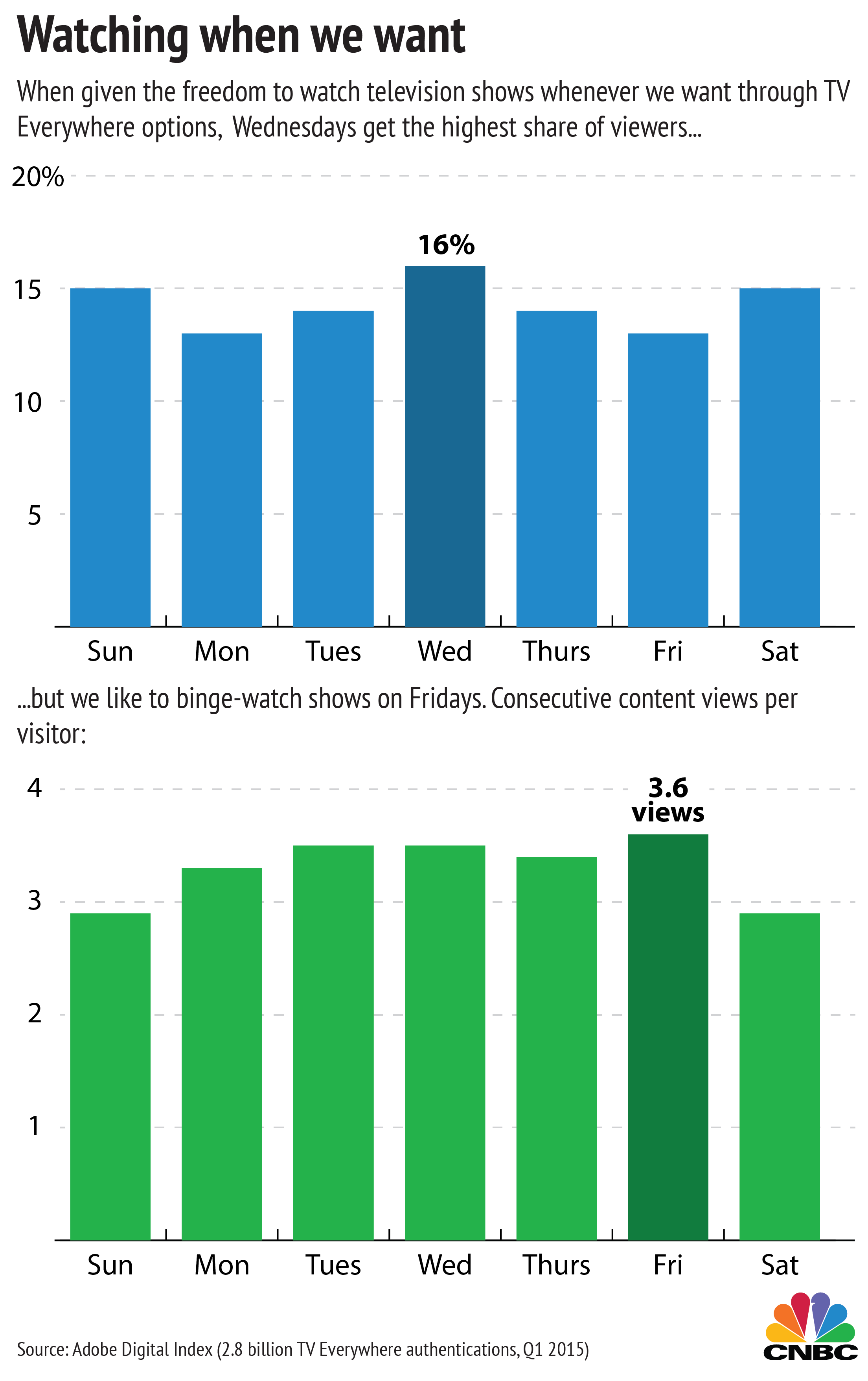Gone are the glory days of the strong Thursday night television lineup.
More consumers are choosing to watch their favorite shows through "TV Everywhere" on-demand options, and when they have the freedom to choose, they don't choose Thursdays, according to new data from Adobe Digital Index.
The strong Thursday night lineup was always artificial—movie studios liked to advertise going into the weekend, so television programmers stacked the good shows on that day to make the most money. If we can watch the same programs on demand through a device, we tend to watch on Wednesdays and to binge-watch shows the most on Fridays, according to the data.




